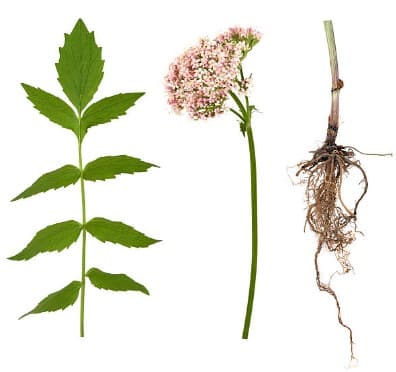

Valerian root allergy in dogs is an allergic reaction to the Valerian root plant. Symptoms may include skin irritation or itchiness, inflamed skin, swelling, hair loss, redness, and hives. Other symptoms may include abdominal pain, drooling, vomiting, and difficulty breathing.
Valerian root allergy in dogs is caused by an immunological reaction to certain proteins found in the Valerian root plant. When a dog is exposed to these proteins, their body recognizes them as foreign and produces an immune response to defend itself. This reaction causes the above mentioned symptoms of itching, swelling, and redness. Other symptoms such as abdominal pain, drooling, vomiting, and difficulty breathing may result if the reaction is particularly strong.
Valerian root allergy in dogs can be diagnosed through physical examination, as well as lab tests looking for signs of inflammation and the presence of allergy-causing proteins in tissue samples from the affected area. Skin biopsies can also be used to help confirm the diagnosis. Blood tests can also be used to measure antibody levels, which can help identify allergens in the environment. Additionally, a pet may be tested for reactions to Valerian root by oral challenge, in which small doses are administered in increasing increments until a reaction is seen.
Valerian root allergy in dogs is a serious condition and must be treated as soon as symptoms are noticed. If untreated, the allergy can lead to more serious symptoms such as anaphylactic shock, which can be fatal. The mortality rate for untreated cases of valerian root allergy in dogs is unknown.
Valerian root allergies in dogs should be treated with avoidance of the plant if possible, with symptoms managed with prescribed anti-inflammatory medications and/or steroids. Antihistamines may help with symptoms such as itching and swelling. Owners should consult a veterinarian to discuss the best treatment for their pet.
Prevention methods for Valerian root allergy in dogs include avoiding contact with the plant or any product containing the plant, as well as avoiding any topical products that contain Valerian root extracts. An aggressive flea control program and routine bathing can help reduce irritation caused by exposure. If your pet does have an allergic reaction, treatment with antihistamines or topical corticosteroids prescribed by your veterinarian can help reduce the itching and inflammation.
Valerian root allergy in dogs is not contagious and cannot be spread to humans. However, people can develop skin irritation and allergic reactions from contact with the Valerian root plant. For this reason, it is important to keep pets away from any contact with the Valerian root plant.
There are some home remedies that may be helpful in managing this allergy in dogs. These include bathing your pet more frequently with a gentle shampoo, avoiding areas where Valerian root may be present and providing your dog with foods that are low in allergens. Some owners have reported success when giving their pets anti-inflammatory medications such as Benadryl or Claritin.
While these dog allergy remedies may be helpful in managing Valerian root allergies in dogs, it’s important to remember that they are not a guaranteed solution. If you have concerns or questions regarding your pet’s allergy, it is best to consult with a veterinarian who can provide adequate advice and treatment.
Sensitive dog breeds that are vulnerable to valerian root allergy include Beagles, Labradors, Spaniels, Golden Retrievers, and Poodles. These breeds often experience digestive issues, vomiting, and skin reactions when exposed to the allergy. Large dog breeds may also experience excessive salivating, hives, and difficulty breathing. It is important to take precautionary measures if any of these breed populations are exposed to valerian root, to prevent further allergic reactions.
Have you ever experienced your dog having an allergy to Valerian root? If so, how did your dog respond? How did you feel during the process? How did you manage it?
No matter how you managed this pet health issue, it’s important to remember that you are always doing your best for your pet, and for that you should be proud. Wishing you and your pup peace and good health!